Three words that best describe the 2017 International Builders’ Show? Jam-packed, non-stop and inspiring. Many attendees left with a renewed sense of excitement for their craft and a portfolio of new knowledge. Trends from the 2016 Best in American Living™ Awards class of winners and ideas shared at the 2017 NAHB Design Committee’s annual design trends roundtable discussion gave attendees mountains of take-home design ideas.
Trends from both address overall styles, exterior materials, interior materials and colors, and architectural layouts and details. Thoughtfully incorporating these trends into today’s homes and communities can help architects, designers and builders stay ahead of their competitors and maintain a cutting-edge reputation with clients.
Architectural styles

Photography by Doug Petersen
The Heartland shows off the modern farmhouse style throughout the house, incorporating dark frames, a farmhouse sink, natural wood beams and barn doors.]
Think Mad Men meets 21st-century luxury, and you have today’s take on midcentury modern, a style that continues to trend across the nation. The style is recognizable by its emphasis on planar massing, open floor plans and large expanses of glass. Modern-day furnishings pay homage to Mies van der Rohe’s Barcelona Chair but exude all of the comforts and technology of today’s lifestyle.
Also still popular is the modern farmhouse style that incorporates dark door and window frames (also seen in midcentury modern), natural wood beams and farmhouse sinks, all details that make even the largest of homes still feel comfortable and livable. Barn doors, which can be modernized with glass or alternative hardware materials, are both focal points and space-smart, taking the place of door swings.
Overall, there has also been a return to traditional over modern design. Architects, designers and home buyers are favoring timeless, classical architectural details.
Exterior materials

Photography by Jeff Garland
Waterside in Indiana combines metal roofs with traditional shingles. The home also features two different directions of siding, horizontal for the first floor and vertical above.

Photography by Sarah Moore
Bar Triangle Ranch in Texas incorporates wood and two different stone designs in its façade.
Across the United States, metal roofs are increasing in popularity, and not just on modern homes. Modern farmhouses, contemporary and rustic homes alike incorporate metal roofs in various colors and degrees of rawness. For remodeled homes, owners are turning to different colored roof tiles, such as red, to modernize the home.
On exterior walls, board and batten and ipe (pronounced EE-pay) natural wood siding are trending. Fiber cement siding still continues to be popular, but stand it vertically and pair it with battens for a more unique look than horizontal siding. In 2017, expect to see an increasing number of homes with two directions of siding, even on the same façade. Switching from horizontal to vertical partially up a façade adds visual interest without having to change materials or colors.
Other exterior trends to watch for include striped brick (using a different color of brick as an accent), painted brick and mixing natural materials.
Interior materials
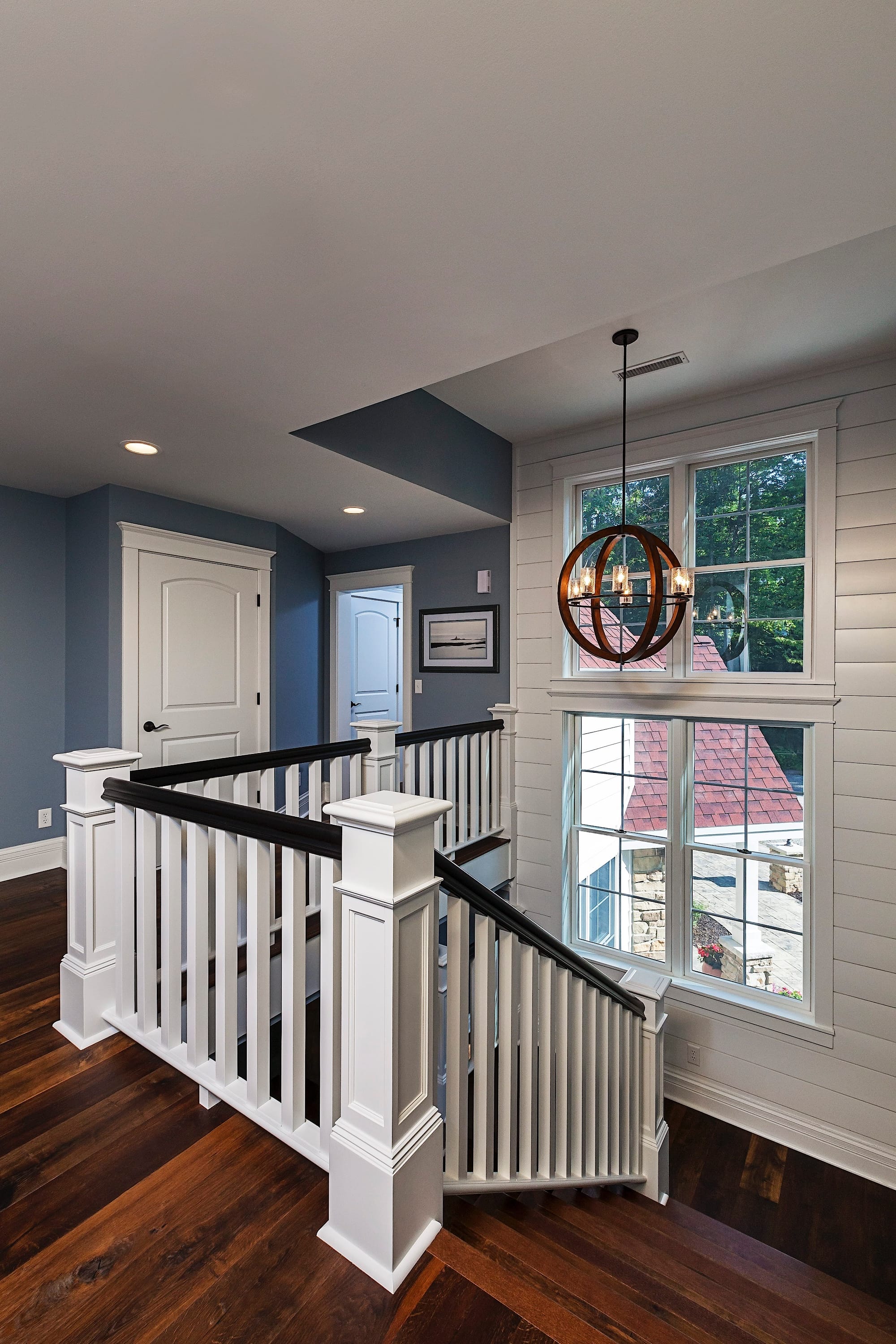
Photography by Jeff Garland
This stair features a shiplap wall and pairs the white boards with a purple hue in the hall.
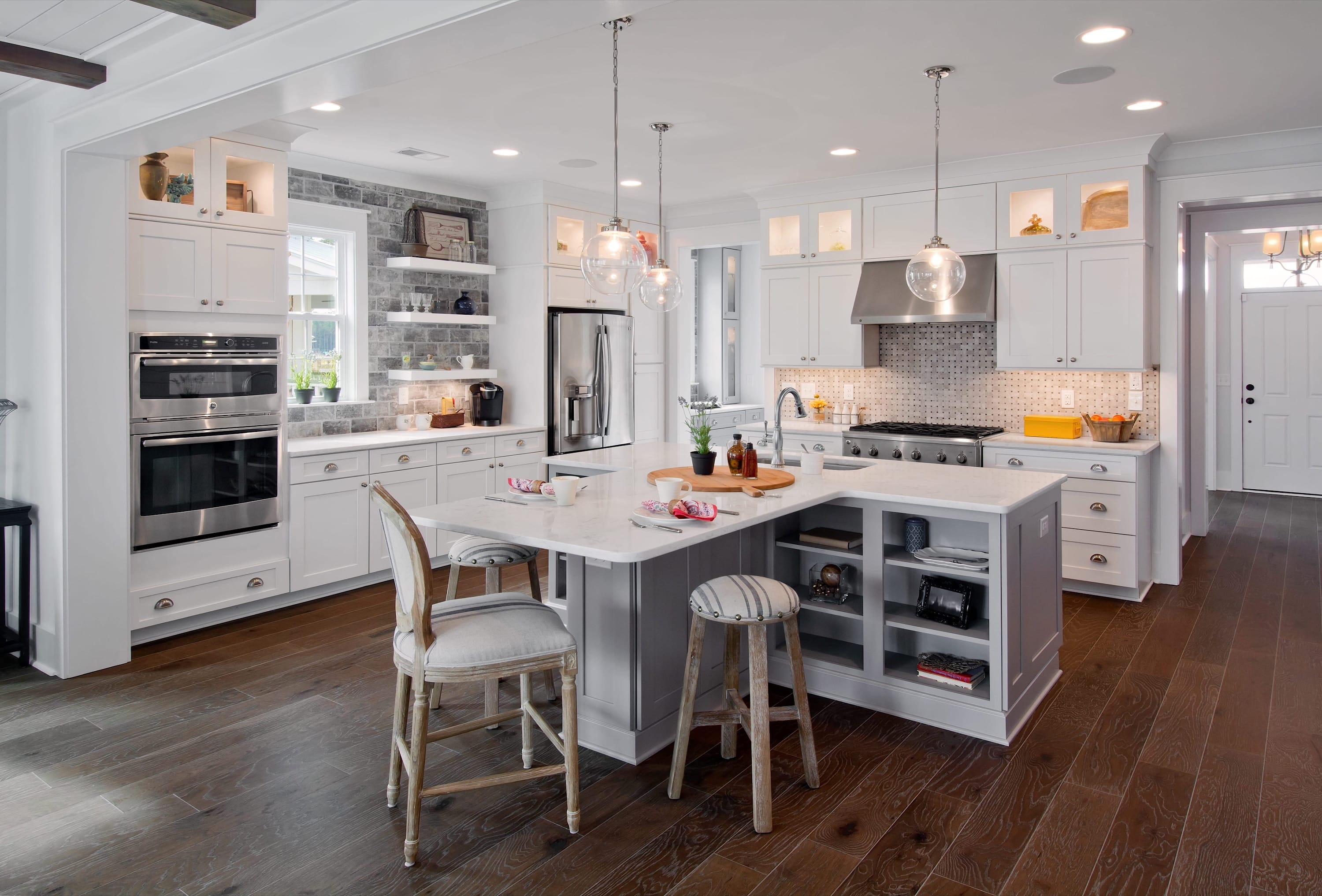
Photography by Johnson Pictures Inc.
Firethorn at Summers Corner sports dual color cabinets and two different tile designs.
Shiplap, or other siding such as tongue-and-groove that gives a shiplap appearance, is showcased throughout this year’s class of winners, be it in entryways, living rooms, accent walls, stairways and more. Rather than simply painting a room, the addition of siding creates visual interest without being too “loud,” and the use of shiplap will give the design staying power.
Natural wood ceilings and beams have also trended up, bringing a natural element even into modern-chic homes. Wood floors — either very dark or very light — are increasingly popular.
Kitchens are sporting black stainless steel appliances and dual-color cabinets (usually dark on the bottom and lighter on top). Architects and designers at the Design Committee roundtable agreed that their clients are asking for quartz over granite, as granite can limit other design choices. For those who still want granite, one option is to pair a solid surface quartz with granite trim. Quartzite is also something to watch as 2017 progresses.
Over kitchen cabinets, designers are now incorporating lighting and tile to add interest to otherwise under-designed spaces. Tiles are now being offered in new and detailed designs; for example, a busy mosaic used behind the stovetop.
Simultaneously, larger tiles are increasing in popularity. Larger tiles require thoughtful design from the very beginning to ensure a seamless installation and finished product. Design tip: Be thoughtful when choosing grout. This is something that is often overlooked in tile design, but it can add a finishing touch that makes a kitchen or bath sing.
Colors
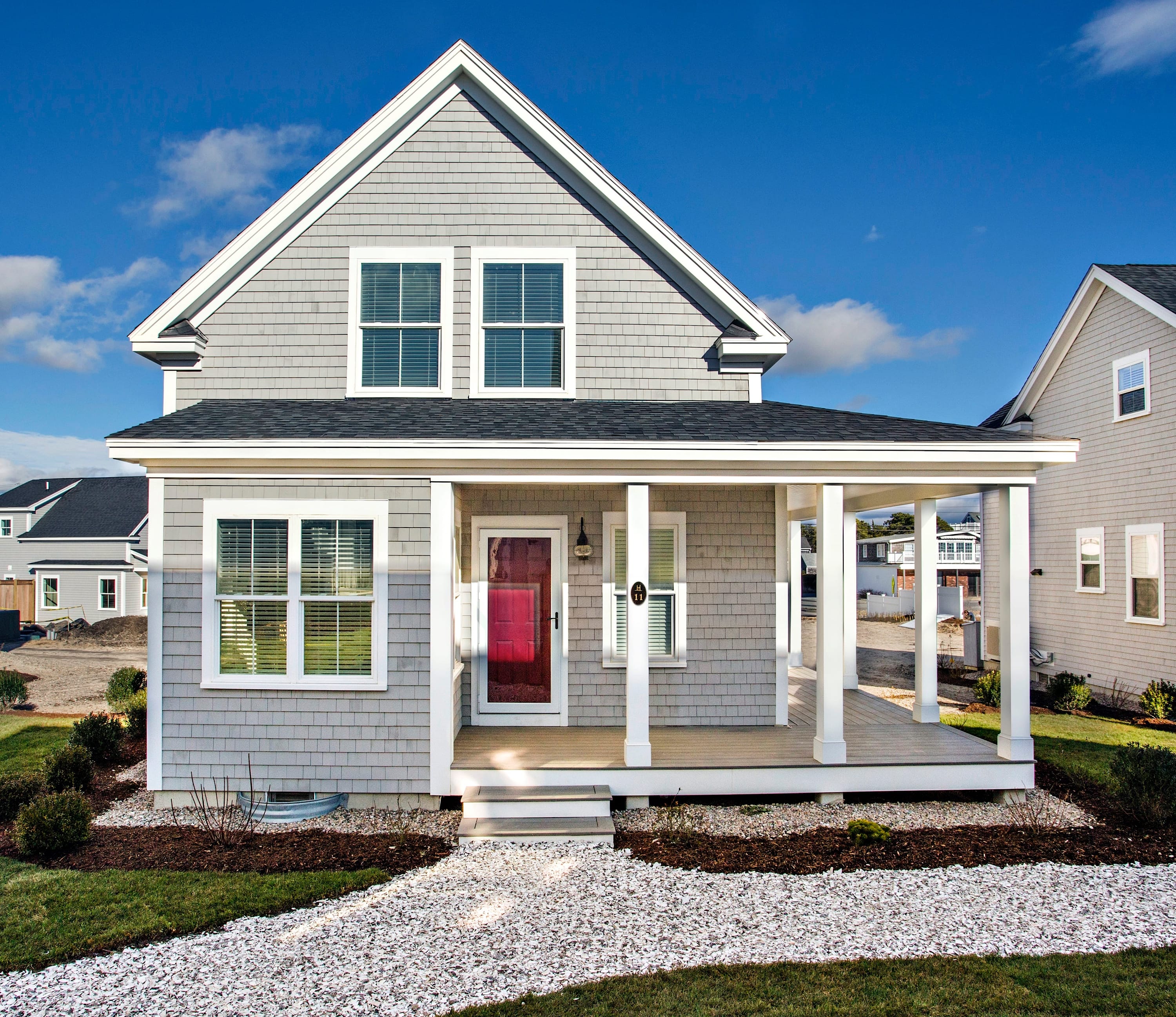
Photography by Alison Caron
Front doors in the Heritage Sands community are offered in many colors, including red, blue and pink.
White-on-white interiors are still seen in every style of home, but gray on gray is getting left behind. Blues and greens are also wanted by clients, according to NAHB design professionals, as are bright and bold colors in urban and millennium-heavy areas. The 2017 Colors of the Year mostly all fall on the purple to taupe spectrum, although Thrive, released as a “key color” for 2017 by the Color Marketing Group, is reminiscent of 1960s Avocado. Are the earlier decades making a comeback? Some hope not, but it is perhaps too soon to tell.
In Texas, Colorado and other states, clients are asking for bright doors, typically reds or turquoises. A bright, unique front door color gives any home a unique feel to a potential buyer.
Layout and design details
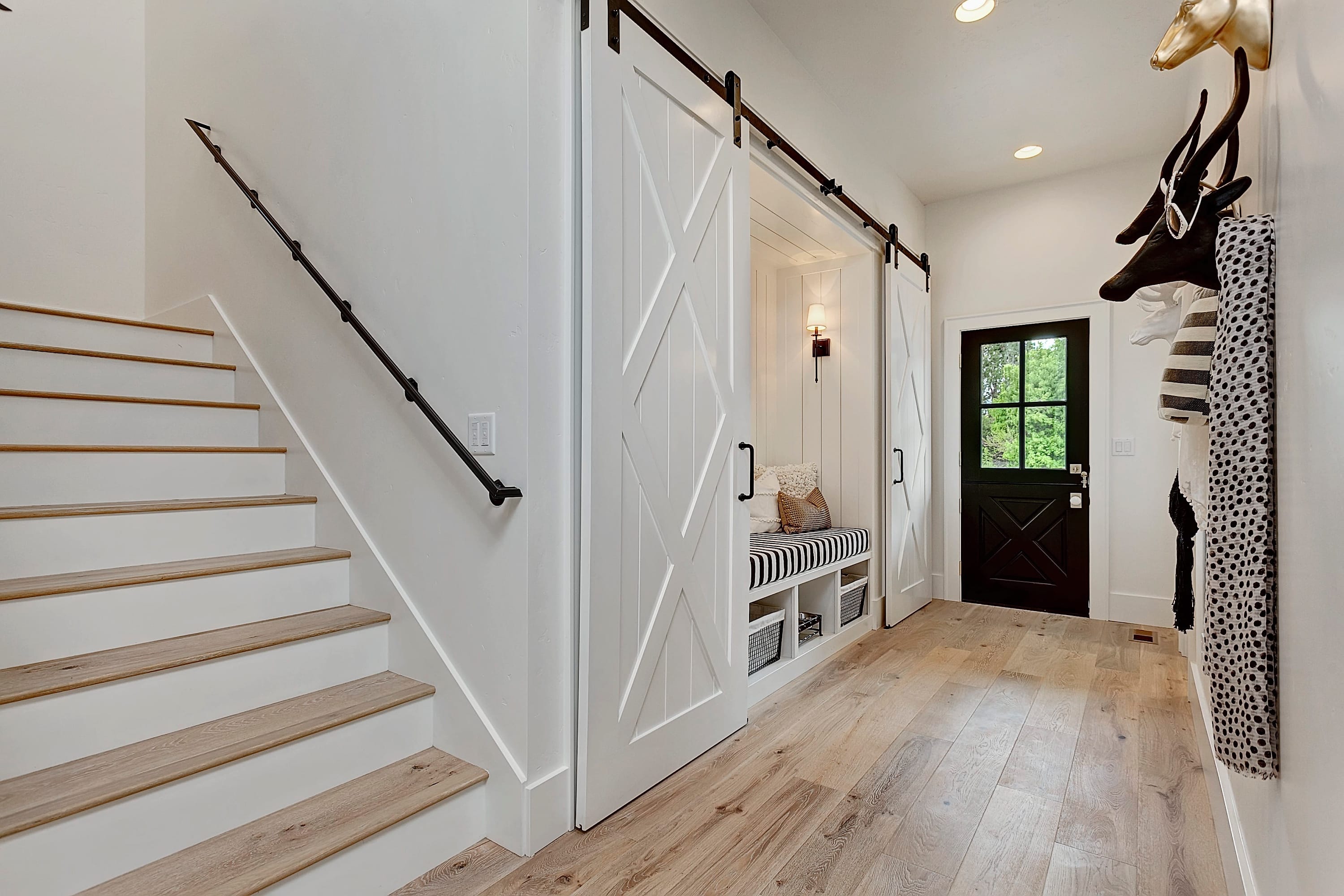
Photography by Doug Petersen
The Heartland includes a mud room, bench and storage space combo by the front door, while also using farmhouse doors.
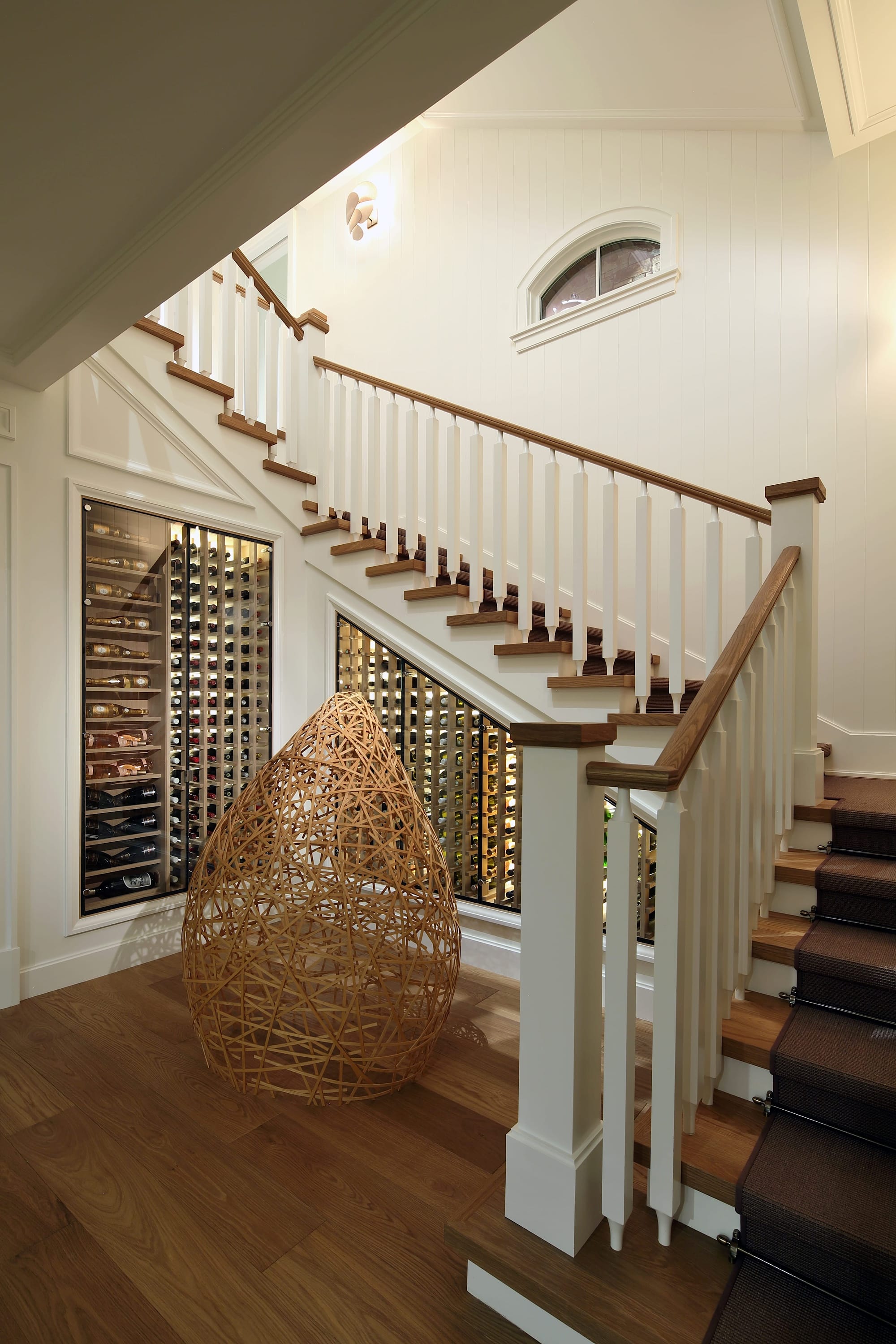
Photography by Erhard Preiffer
Rather than close off under-stair space, the designers of Michigan Lake House created a clever wine storage and display area.
Architects and designers are increasingly taking previously unused space and creating nooks, usually in the shape of under-stair storage, benches or hide-away areas. The open floor plan continues to dominate, although buyers are now looking for the next level: open spaces that can transition for multiple uses.
In response to the open layouts, architects and designers are also now creating “escape rooms,” or private spaces that can be closed off from the open plan, to give home owners the option of a secluded space to be used as needed, perhaps as an office or studio.
One problem with the open layout is that buyers can get overwhelmed if there is no definition in the space. Flooring changes or drop ceilings can help define a space while still maintaining an open layout.
Two last kitchen trends: bars in the kitchen and giant islands that double as tables. Both these trends allow the kitchen to be versatile, from entertaining to a spot to complete homework while parents work or cook.
For more photos and design inspiration, go to bestinamericanliving.com or follow the blog for stand-out homes and communities across the United States.
The original article, written by Alexandra Isham, was published in the Spring 2017 issue of Best in American Living.

